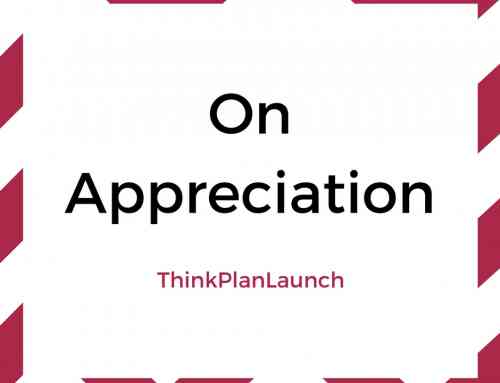Thousands of reports, results, memos, emails, and phone calls fly throughout the office on any given day and chances are dishonesty can be present in a tiny fraction of these correspondences. We’ve recently discussed about sociopaths being present in the workplace but they aren’t the only ones to be guilty of being dishonest. In fact, there is a much broader range of people who have been dishonest at some point in their professional careers. According to HireRight, 34 percent of resumes are made up of lies. While much of what is said probably has little effect on the day to day business of an organization some forms of dishonesty bring great harm.
In many cases, dishonesty goes undetected. It happens in the meeting room, during a conference call, and even at a job interview. While it would be great to safeguard against dishonesty, bringing in a lie detector to an interview wouldn’t be appropriate. No, investigating dishonesty takes a very delicate touch and a very wide range of analysis.
There are many motivating factors to encourage one to lie. Understanding these factors helps pinpoint vulnerabilities in people and help prevent people from feeling to indulge in dishonesty in the first place. No one wants to deal with dishonesty but it occurs and can quickly grow into a big problem. Understand what is behind it and how to deal with it.
No place for dishonesty in an organization
When someone lies, it has the potential to bring down a person, project, or organization. It creates tension, a loss of respect, and a loss of trust. When people work in an environment that exposes them to forms of dishonesty, it lowers productivity and moral. Even when a person is not being lied to directly, when they see someone lie to someone else it can cause great discomfort. The bottom line is, dishonesty can lower the performance of an organization.
In addition to suffering from lowered performance, an organization can succumb to legal troubles especially when other parties are involved. This can bring significant harm to the reputation and financials of a company. A small string of lies can put the organization on a slippery slope. While some might think taking advantage of a situation to get ahead isn’t a high risk, there is always opportunities for things to come crashing down.
Lastly, dishonesty can raise serious safety issues. When accuracy is vital for the safety of others, a simple white lie can lead to serious harm and even death. In many cases, an employee might not even fully understand the implications lying brings to the safety of others. In the daily work tasks many employees face, they are often clueless to what the big picture idea is unless it has been communicated effectively. The importance of honesty is vital.
Setting a precedent for honesty should come from the top of the organization. The ethics, rules, and culture of a company are important for maintaining an environment where the truth is encouraged no matter how bad it is. Transparency is a blessing in many cases. Leaders in the organization should set an example for coming clean. By presenting a case for honesty, it allows an organization to deal with problems early and efficiently.
Learn about others to find motivation for dishonesty
Dishonest can manifest itself for varying reasons and causes. In many cases it is done in self-defense. Employees are sometimes afraid that problems that have risen would result in penalties or negative consequences if they are revealed to managers. In businesses where job security is very low, dishonesty is almost certain. One way to find out if job security is an issue for your employees is to administer a stress test. It is very telling. In addition to learning about employees, communication skills must be considered.
Communication is a double-edged sword. When communication is done with appropriate intentions it can propel an organization to achieve anything. When communication is done with inappropriate intentions, it can lead an organization astray onto dark paths. A great communicator can be either a hero or a villain depending on how they wield their power. For the manager, communication is critical to running an effective team. A lot of what is left out, or a lot of one-way communication can prevent a manager from learning what may cause dishonesty. For employees, this is also the case when working with others.
When a person is suspected of being dishonest, there are several ways to approach the issue. The best way should be trying to find the underlying motives for someone to lie in the first place. Basically, listening and learning are the first steps before any action should take place. This can be done through good communication, understanding the other person’s situation, and discovering what they truly desire (not just what they say). These tactics can be strengthened with behavioral and motivational analysis assessments which are very useful tools to help teams understand each member’s unique styles of communication and behavior.
When a person has been flagged, it is a good idea to set up a documented profile of the offending person. This provides the ability to analyze and learn, evidence for confrontations and dismissal. Documentation isn’t the most entertaining thing someone can do but it is one of high use should an issue arise that needs to be dealt win.
Dealing with dishonesty
When the motives and desires of a potentially dishonest person are found a early warning system can be developed. The most ideal situation is to prevent dishonesty in the first place.
While it might make sense to root out people who are dishonest, it isn’t always a practical thing to do. The process to fire and then rehire a replacement can take months depending on the position. Then there is the red tape involved. Company procedure, legal risks, etc…. It is bad for the morale of the organization and might not lead to better productivity.
The best case scenario is prevention. To prevent dishonesty, a lot of changes must be made. Transparency and honesty need to be rewarded and celebrated within the organization. In addition to this, leniency must be iterated when people are honest about their mistakes or shortcomings. If the damage caused by someone is insignificant or unintentional, a lenient attitude may prevent future dishonesty.
Also, by taken the steps outlined above, you will be able to prevent dishonesty for specific individuals. If there are any causes of concern or a suspicion of dishonesty due to a revealed motive or the particular behavioral profile of an employee, it can be addressed before any lies are told. A manager can be direct, ask specific questions, and given employees a chance to come clean without bullying them into revealing the truth.
Many employees would love to maintain their integrity and honesty and softening the path towards the truth will give them an easy way to do the right thing.




Leave A Comment